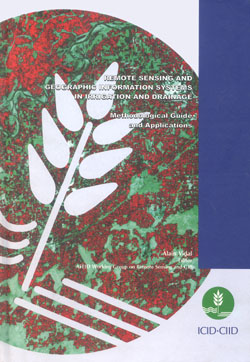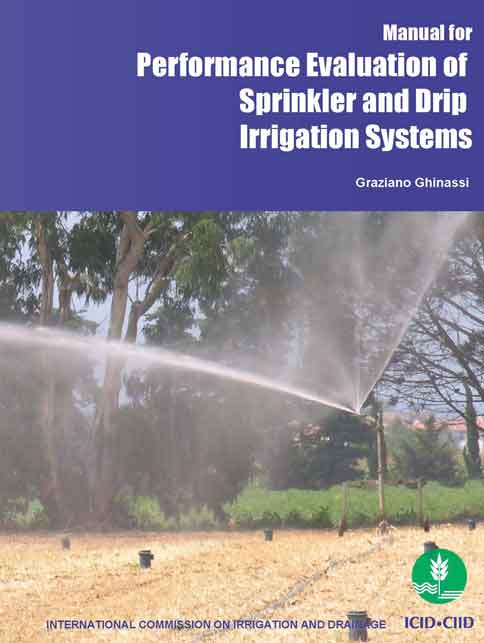
The overall water use efficiency of a manually operated system, exclusive of the use of any return flow, seldom exceeds 40 percent. It is reasonable to expect an increase of the overall efficiency of about 10 percent or more for a system with some automation. The advantages of automation are not limited to savings in operation cost and in water. It also alleviates the risk of waterlogging and salinization. A further advantage is that it increases the reliability and accuracy of water distribution. This contributes to the establishment of a climate of confidence between the operating authority and the farmers, which in turn contributes to the effective organization of water user groups and their participation in operation and maintenance activities.
With automation, it may also be possible to accurately know the volume of water delivered to individuals or groups of farmers. This makes possible the introduction of volumetric water charges, combined or not with a system of annual volumetric allocation. This approach is a useful tool for encouraging farmers to optimize the use of limited water allocations and to increase productivity.
Automating a canal system is implementing a control system that includes automatic monitoring or the control equipment that upgrades the conventional method of canal system operation. Automation is used to simplify and reduce or replace the decision-making process of the operators and to implement a decision. It is increasingly used to improve the effectiveness and to reduce the cost of water supply system operations.
Automation of a canal system should not be thought of as an end in itself, but rather as a means to better operate that system. The true goal should be to achieve the most efficient and beneficial operation possible. Expanding control system capabilities is one way of economically reaching this goal.
The socio-economic conditions of the farmers and the scientific use of water to satisfy crop requirements will determine the degree of success of the complete approach of implementing automation from headwork to farm level.
Related items you may like























Irrigation
Sources of Irrigation
Irrigation History +
Sources of Irrigation +
IMPROVING SOIL MOISTURE +
Ponds +
Tanks +
Diversion Weirs +
Dams and Reservoirs +
Groundwater +
Conjunctive Water Use +
Wastewater +
Poor Quality Water +
Application of Irrigation water
Canal Irrigation +
Flood Irrigation +
Deficit Irrigation +
Supplemental Irrigation +
Sprinkler Irrigation +
Drip Irrigation +
Lift Irrigation +
Centre Pivot Irrigation +
Tidal Irrigation +
Micro-Irrigation Technologies for Small Holders +
Automatic Irrigation Systems +
Pressurized Irrigation +
Irrigation in Viticulture +
Purpose of Irrigation
Instruments and implements of Irrigation
Pumps +
Centrifugal Pumps +
Submersible Pumps +
Turbine and Jet Pumps +
Conveying Pipes +
Sprinklers +
Drippers +
Canal Automation Systems +
Irrigation Management
Economics of Irrigation System +
I&D System Types +
I&D Investment Functions +
I&D Management Issues +
Participatory I&D Management +
Equity in Irrigation +
Irrigation Services +
Irrigation and environment
Pollution and Irrigation +
Irrigation and Climate Resilience +
Environmental Aspects of Irrigation +
Environmental Impacts of Irrigation +
Green Lawn Irrigation +
Safe Use of Waste Water in Irrigation +
Organic Agriculture +
Soil Health +
Soil Health Management +
Quality of Irrigation Water +
Capacity Development
Drainage
Drainage Types and Systems
Agricultural Drainage +
Field Drainage systems +
Canal Irrigation and Drainage +
Surface Drainage Systems +
Subsurface Drainage +
Mole Drainage +
Bio-Drainage +
Regional Bio-Drainage +
Drainage Issues
- Canalization
- Head of a canal
- Soil classification systems
- Canal
- Straight canals
- Slightly sinuous canals
- Moderately sinuous canals
- Very sinuous canals
- Rabi and monsoon sections of a canal
- Canal land width, or Right-of-way
- Accumulative escaping power of canal
- Parent canal
- Offtake canal
- Distributary canal
- Distributary head, Secondary canal intake, or Lateral turnout
- Sub-minor head, or Quaternary canal intake
- Fall, Drop, Drop structure, Fall structure, Canal weir
- Fayoum canal weir
- Scouring escape, Sediment escape, Silt escape, Canal Scouring sluice
- Canal overflow spillway
- Canal spillways
- Shaft and culvert canal spillway, Combined overflow spillway and culvert, Subway, Syphon
- Stand pipe and culvert canal spillway
- Siphon spillway (canal)
- Marseilles canal type outlet
- Culvert aqueduct with full canal banks
- Culvert aqueduct with canal bank retaining walls
- Syphon, Inverted siphon, Irrigation syphon, Canal syphon, Syphon superpassage
- Canal evaporation losses
- Conveyance losses, Transmission losses, Total losses, or Canal losses
- Average supply (of a canal)
- Overload of a canal
- Operation of a canal with constant volume
- Operation of a canal with volume control
- Change of slope (of a canal)
- Integrated production systems
- Irrigation canals
- Navigation canals
- Power canals
- Double purpose canal
- Perennial canal
- Seasonal canal
- Inundation canal
- Link canal, Carrier canal, or Feeder canal
- Contour canal
- Ridge canal
- Side slope canal
- Main canal, Main line, Pipe main, or Principal canal
- Branch canal, Lateral, or Primary canal
- Distributaries, or Secondary canals
- Minors, Distributor minors, or Tertiary canals
- Sub-minors, or Quaternary canals
- Distributary canal
- Parallel canal, or Side canal
- Diversion requirement, Gross irrigation requirement, or Delta at head of main canal
- Natural drainage systems, or Random drainage systems
- Canal Scraper
- Automation
- Pneumatic butyl valve (for pipeline distribution systems)
- Biological systems
- Hydraulic effectiveness of flood control systems
- Systems analysis, Operational analysis, System engineering, Mathematical modeling, Management science
- Systems compatibility
- Systems engineering
- Systems integration
- Decision Support Systems
- Increment in land revenue, Water advantage rate, or Canal advantage rate



